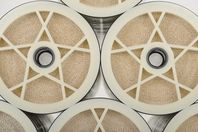Asia
EMEA

LANXESS Canada Contacts
Contact our Sites in Canada
Media Inquiries
General Inquiries
Please click here to e-mail LANXESS Canada with product inquiries and general requests.
Global Press Releases
2013-10-18
LANXESS at the IDA World Congress 2013,<br> October 20 to 25, Tianjin, China, Stand C20
LANXESS at the IDA World Congress 2013, China: Complete product portfolio for BWRO
As one of the world’s leading suppliers of products and solutions for water treatment and purification, LANXESS helps its customers use the world’s dwindling water resources efficiently. At this year’s IDA (International Desalination Association) World Congress, which is being held in Tianjin, China, from October 20 to 25, 2013, the specialty chemicals company is presenting the RO membrane elements in its Lewabrane series. Jean-Marc Vesselle, head of the Liquid Purification Technologies (LPT) business unit, says: “Our products meet the highest German and international production and quality standards. For quality assurance purposes, each individual Lewabrane element is checked before being delivered to the customers.”
Quality made in Bitterfeld
The membrane elements for reverse osmosis (RO) are manufactured at LANXESS’ Bitterfeld site in Germany. The Lewabrane grades consist of spiral-wound polyamide composite membranes and are specially designed for industrial water treatment and the treatment of drinking water. The range currently includes products for the desalination of brackish and low-salinity waters. Main areas of application include the production of boiler feed water required in power stations, wastewater treatment and groundwater remediation and recharge. The technology is also used for demineralization and particle removal in microchip manufacture.
All Lewabrane membrane elements comply with the NSF/ANSI Standard 61 for health effects of drinking water system components. The U.S. National Sanitation Foundation (NSF International) has thus certified that all membrane elements currently offered by LANXESS are safe for use in the treatment of drinking water, a market with strong potential for growth.
The Lewabrane product portfolio includes standard elements (HR and HF), low energy (LE) elements and fouling-resistant (FR) elements.
The HR elements are designed to provide extremely low salt transport in normal operation, with more than 99.7 percent salt rejection measured under standard conditions. The high rejection for troublesome compounds such as silica is also remarkable. The HF elements boast high flow rates and water productivity.
Special membrane elements are now also available for water with strong fouling potential. Dr. Jens Lipnizki, head of Technical Marketing Membranes at LPT, explains: “Our membrane elements are characterized by a high degree of polymerization and a low surface charge, which in itself reduces the formation of particle deposits. In addition, the fouling-resistant (FR) elements have been equipped with a special feedspacer to generate greater turbulence in the feedwater channel, meaning that less solids accumulate on the membrane surface.”
Low energy (LE) elements were added to the product range in mid-2013. Their operating pressures are around 20 to 40 percent below those of the company’s standard elements. The pumps that use these elements exhibit corresponding reductions in energy consumption. Lewabrane LE membranes are particularly beneficial in any applications demanding a low energy consumption where slight compromises in terms of water quality are acceptable. The main areas of application include the desalination of brackish water for the industrial and municipal sectors and wastewater treatment.
In mid-2014, LANXESS plans to expand its BWRO (Brackish Water Reverse Osmosis) range to include new elements for seawater desalination.
LewaPlus planning software for the design of complex water treatment plants
While membrane technology is very cost-efficient for water with a high salt content, ion exchange resins are essential for purifying water with low salt concentrations to the point where only trace amounts remain. With both methods connected in series, water of the highest purity can be produced even from very poor-quality water. Alexander Scheffler, Director of Membrane Business at LPT, says: “Correctly designing treatment plants for this purpose and receiving comprehensive consulting are of critical importance. Our service includes assistance with plant design, with regard not only to applications engineering, but also the economic and ecological aspects. Our customers benefit from our 75 years of experience in the field.”
Membrane separation and ion exchange complement each other perfectly and help to prolong the service life of, for example, turbines and steam generators by protecting them in the long term against scaling and corrosion. User-friendly, integrated LewaPlus software supports the simulation and design of both reverse osmosis (RO) and ion exchange (IEX) processes. This unique software makes it possible for the first time to design complex water treatment systems and draw direct comparisons between calculations for RO and IEX processes. The latest version 1.5 offers a series of new features, such as the design of seawater desalination plants. The products required for this process are currently in the pilot phase. Market launch is planned for mid-2014. Detailed information on RO membrane elements is available online at www.lewabrane.com. The LewaPlus design software can also be downloaded from this website free of charge.
The Liquid Purification Technologies business unit is part of LANXESS’ Performance Chemicals segment, which recorded sales of EUR 2.2 billion in fiscal 2012.
LANXESS is a leading specialty chemicals company with sales of EUR 9.1 billion in 2012 and roughly 17,500 employees in 31 countries. The company is currently represented at 52 production sites worldwide. The core business of LANXESS is the development, manufacturing and marketing of plastics, rubber, intermediates and specialty chemicals. LANXESS is a member of the leading sustainability indices Dow Jones Sustainability Index (DJSI) World and FTSE4Good as well as the Carbon Disclosure Leadership Index (CDLI).
- Gallery




